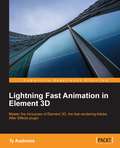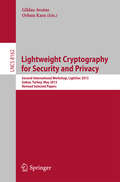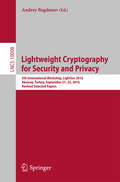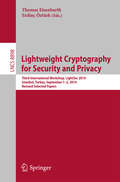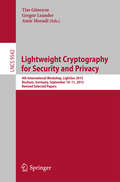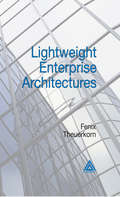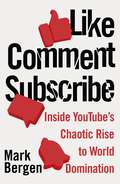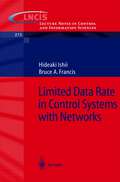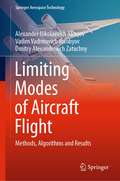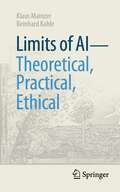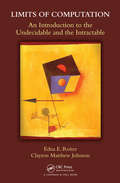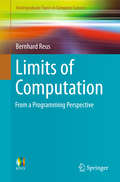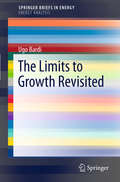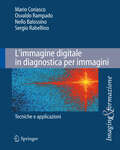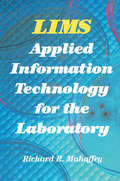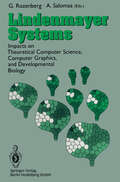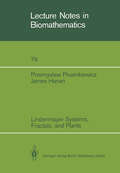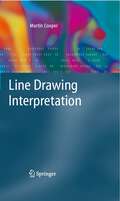- Table View
- List View
Lightning Fast Animation in Element 3D
by Ty AudronisAn easy-to-follow and all-inclusive guide, in which the underlying principles of 3D animation as well as their importance are explained in detail. The lessons are designed to teach you how to think of 3D animation in such a way that you can troubleshoot any problem, or animate any scene that comes your way. If you are a Digital Artist, Animation Artist, or a Game Programmer and you want to become an expert in Element 3D, this is the book for you. Although there are a lot of basics for beginners in this book, it includes some advanced techniques for both animating in Element 3D, and overcoming its limitations. A basic working knowledge of Adobe After Effects is needed.
Lighttpd: Installing, Compiling, Configuring, Optimizing, And Securing This Lightning-fast Web Server
by Andre BogusThis book is for System Administrators or Web Developers seeking a lean deployment platform for web applications or who want to switch to a "lighter" web server than Apache.
Lightweight Cryptography for Security and Privacy: 2nd International Workshop, LightSec 2013, Gebze, Turkey, May 6-7, 2013, Revised Selected Papers (Lecture Notes in Computer Science #8162)
by Gildas Avoine Orhun KaraThis book constitutes the proceedings of the 2th International Workshop on Lightweight Cryptography for Security and Privacy, LightSec 2013, held in Gebze, Turkey, during May 6-7, 2013. The 10 full papers presented together with 3 invited talks were carefully reviewed and selected from 27 submissions. The papers are grouped in topical sections on efficient Implementations and designs, block cipher cryptanalysis, wireless sensor networks, and cryptographic protocols.
Lightweight Cryptography for Security and Privacy: 5th International Workshop, LightSec 2016, Aksaray, Turkey, September 21-22, 2016, Revised Selected Papers (Lecture Notes in Computer Science #10098)
by Andrey BogdanovThis book constitutes the refereed post-conference proceedings of the 5th International Workshop on Lightweight Cryptography for Security and Privacy, LightSec 2016, held in Aksaray, Turkey, in September 2016.The 9 full papers presented were carefully reviewed and selected from 18 submissions. The papers are organized in the following topical sections: cryptanalysis, lightweight designs, implementation challenges.
Lightweight Cryptography for Security and Privacy: Third International Workshop, LightSec 2014, Istanbul, Turkey, September 1-2, 2014, Revised Selected Papers (Lecture Notes in Computer Science #8898)
by Thomas Eisenbarth Erdinç ÖztürkThis book constitutes the refereed post-conference proceedings of the Third International Workshop on Lightweight Cryptography for Security and Privacy, LightSec 2014, held in Istanbul, Turkey, in September 2014. The 10 full papers presented were carefully reviewed and selected from 24 submissions. The papers are organized in the following topical sections: efficient implementations and designs; attacks; and protocols.
Lightweight Cryptography for Security and Privacy: 4th International Workshop, LightSec 2015, Bochum, Germany, September 10-11, 2015, Revised Selected Papers (Lecture Notes in Computer Science #9542)
by Tim Güneysu Gregor Leander Amir MoradiThis book constitutes the refereed post-conference proceedings of the 4th International Workshop on Lightweight Cryptography for Security and Privacy, LightSec 2015, held in Bochum, Germany, in September 2015. The 9 full papers presented were carefully reviewed and selected from 17 submissions. The papers are organized in the following topical sections: cryptanalysis, lightweight constructions, implementation challenges.
Lightweight Enterprise Architectures
by Fenix TheuerkornThe author developed Lightweight Enterprise Architecture (LEA) to enable a quick alignment of technology to business strategy. LEA's simple and effective framework makes it useful to a wide audience of users throughout an enterprise, coordinating resources for business requirements and facilitating optimal adoption of technology. Lightweight Enterprise Architectures provides a methodology and philosophy that organizations can easily adopt, resulting in immediate value-add without the pitfalls of traditional architectural styles. This systematic approach uses the right balance of tools and techniques to help an enterprise successfully develop its architecture. The first section of the text focuses on how enterprises deploy architecture and how architecture is an evolving discipline. The second section introduces LEA, detailing a structure that supports architecture and benefits all stakeholders. The book concludes by explaining the approach needed to put the framework into practice, analyzing deployment issues and how the architecture is involved throughout the lifecycle of technology projects and systems. This innovative resource tool provides you with a simpler, easily executable architecture, the ability to embrace a complex environment, and a framework to measure and control technology at the enterprise level.
Like, Comment, Subscribe: Inside YouTube’s Chaotic Rise to World Domination
by Mark Bergen"Sharp and engaging" - The Times"The intricately-reported, elegantly-crafted story of the website that came out of nowhere, to change everything." - Brad Stone, author of The Everything Store and Amazon Unbound-----------------------------------------------------Now, for the first time ever, discover the story of YouTube: how it started, how it works, and how it came to control our culture.It has entertained us with cat videos, flash mobs, gaming streams and Charlie Bit My Finger.It has educated us with makeup tutorials, DIYs and delicious recipes.It has changed us with advertising, extremism and political propaganda.Since its foundation in 2005, YouTube has existed on a pendulum. Its emergence established a valuable space for unique and important voices to share themselves and their views, and made global stars out of everyday people such as PewDiePie, Shane Dawson and Ryan Higa. It invented the attention economy we all live in today, forever changing how people are entertained, informed and paid online.At the same time, countless extremists have found a home on YouTube, using it to spread misinformation and propaganda - sometimes with real-world life-and-death consequences. The site is massively profitable for its parent company, Google (Alphabet), which has aggressively grown it into a ruthless advertising conglomerate with little regard for its impact beyond the bottom line.In Like Comment Subscribe, Bloomberg tech journalist Mark Bergen delivers the definitive, page-turning account of YouTube. Exploring the stories of the people behind the platform, he tells the story of a technical marvel that upended traditional media, created stars of everyday people, and ultimately changed the world through untamed freedom of speech.
Limited Data Rate in Control Systems with Networks (Lecture Notes in Control and Information Sciences #275)
by Hideaki Ishii Bruce A. FrancisThis book incorporates data rate issues that arise in control design for systems involving communication networks. The general setup is that, given a plant, a communication channel with limited data rate and control objectives, one must find a controller that uses the channel in the feedback loop to achieve the control objectives. The theoretical question of interest is to find the minimum data rate necessary for the channel. This book is motivated by the recent developments in communication technology and aims at engineers and scientists in this field. The use of networks has become common practice in many control applications connecting sensors/actuators to controllers. The book therefore provides the fundamentals of the networks used in control systems, based on hybrid systems theory. The book focuses on the use of networks in distributed systems and on quantization in messages sent over networks.
Limiting Modes of Aircraft Flight: Methods, Algorithms and Results (Springer Aerospace Technology)
by Alexander Nikolaevich Akimov Vadim Vadimovich Vorobyov Dmitry Alexandrovich ZatuchnyThis book describes in detail a method of direct optimization, which makes it possible to choose the best trajectory of an aircraft in conditions of its limited resource. This can happen in the event of an emergency on board, associated with both a possible equipment failure and external influences, for example, when lightning strikes an aircraft or collides with a moving object. The highlight of this book is the fact that the results presented in it can be applied universally to the choice of the flight path of large and small aircraft, as well as helicopter technology. In addition, they take into account various conditions of aircraft flight, including a possible accident. The methods and algorithms presented here can be used as the basis for the creation of automatic collision avoidance systems, as well as the choice of the best aircraft trajectory for flights in different regions and in different conditions.
Limits of AI - theoretical, practical, ethical (Technik im Fokus)
by Klaus Mainzer Reinhard KahleArtificial intelligence is a key technology with great expectations in science, industry, and everyday life. This book discusses both the perspectives and the limitations of this technology. This concerns the practical, theoretical, and conceptual challenges that AI has to face. In an early phase of symbolic AI, AI focused on formal programs (e.g., expert systems), in which rule-based knowledge was processed with the help of symbolic logic. Today, AI is dominated by statistics-based machine learning methods and Big Data. While this sub-symbolic AI is extremely successful (e.g., chatbots like ChatGPT), it is often not transparent. The book argues for explainable and reliable AI, in which the logical and mathematical foundations of AI-algorithms become understandable and verifiable.
Limits of Computation: An Introduction to the Undecidable and the Intractable
by Edna E. Reiter Clayton Matthew JohnsonLimits of Computation: An Introduction to the Undecidable and the Intractable offers a gentle introduction to the theory of computational complexity. It explains the difficulties of computation, addressing problems that have no algorithm at all and problems that cannot be solved efficiently. The book enables readers to understand:What does it mean
Limits of Computation: From a Programming Perspective (Undergraduate Topics in Computer Science #0)
by Bernhard ReusThis textbook discusses the most fundamental and puzzling questions about the foundations of computing. In 23 lecture-sized chapters it provides an exciting tour through the most important results in the field of computability and time complexity, including the Halting Problem, Rice's Theorem, Kleene's Recursion Theorem, the Church-Turing Thesis, Hierarchy Theorems, and Cook-Levin's Theorem. Each chapter contains classroom-tested material, including examples and exercises. Links between adjacent chapters provide a coherent narrative.Fundamental results are explained lucidly by means of programs written in a simple, high-level imperative programming language, which only requires basic mathematical knowledge. Throughout the book, the impact of the presented results on the entire field of computer science is emphasised. Examples range from program analysis to networking, from database programming to popular games and puzzles. Numerous biographical footnotes about the famous scientists who developed the subject are also included."Limits of Computation" offers a thorough, yet accessible, introduction to computability and complexity for the computer science student of the 21st century.
The Limits of the Digital Revolution: How Mass Media Culture Endures in a Social Media World
by Derek HrynyshynThis academic analysis explores social media, specifically examining its influence on the cultural, political, and economic organization of our society and the role capitalism plays within its domain.In this examination of society and technology, author and educator Derek Hrynyshyn explores the ways in which social media shapes popular culture and how social power is expressed within it. He debunks the misperception of the medium as a social equalizer—a theory drawn from the fact that content is created by its users—and compares it to mass media, identifying the capitalist-driven mechanisms that drive both social media and mass media. The work captures his assessment that social media legitimizes the inequities among the social classes rather than challenging them.The book scrutinizes the difference between social media and mass media, the relationship between technologies and social change, and the role of popular culture in the structure of political and economic power. A careful look at social media networks such as Facebook, Twitter, and Google suggests that these tools are systems of surveillance, monitoring everyday activities for the benefit of advertisers and the networks themselves. Topics covered within the book's 10 detailed chapters include privacy online, freedom of expression, piracy, the digital divide, fragmentation, and social cohesion.
The Limits of the Digital Revolution: How Mass Media Culture Endures in a Social Media World
by Derek HrynyshynThis academic analysis explores social media, specifically examining its influence on the cultural, political, and economic organization of our society and the role capitalism plays within its domain.In this examination of society and technology, author and educator Derek Hrynyshyn explores the ways in which social media shapes popular culture and how social power is expressed within it. He debunks the misperception of the medium as a social equalizer—a theory drawn from the fact that content is created by its users—and compares it to mass media, identifying the capitalist-driven mechanisms that drive both social media and mass media. The work captures his assessment that social media legitimizes the inequities among the social classes rather than challenging them.The book scrutinizes the difference between social media and mass media, the relationship between technologies and social change, and the role of popular culture in the structure of political and economic power. A careful look at social media networks such as Facebook, Twitter, and Google suggests that these tools are systems of surveillance, monitoring everyday activities for the benefit of advertisers and the networks themselves. Topics covered within the book's 10 detailed chapters include privacy online, freedom of expression, piracy, the digital divide, fragmentation, and social cohesion.
The Limits to Growth Revisited (SpringerBriefs in Energy)
by Ugo Bardi“The Limits to Growth” (Meadows, 1972) generated unprecedented controversy with its predictions of the eventual collapse of the world's economies. First hailed as a great advance in science, “The Limits to Growth” was subsequently rejected and demonized. However, with many national economies now at risk and global peak oil apparently a reality, the methods, scenarios, and predictions of “The Limits to Growth” are in great need of reappraisal. In The Limits to Growth Revisited, Ugo Bardi examines both the science and the polemics surrounding this work, and in particular the reactions of economists that marginalized its methods and conclusions for more than 30 years. “The Limits to Growth” was a milestone in attempts to model the future of our society, and it is vital today for both scientists and policy makers to understand its scientific basis, current relevance, and the social and political mechanisms that led to its rejection. Bardi also addresses the all-important question of whether the methods and approaches of “The Limits to Growth” can contribute to an understanding of what happened to the global economy in the Great Recession and where we are headed from there.
Limits to Parallel Computation: P-Completeness Theory
by Raymond Greenlaw H. James Hoover Walter L. RuzzoThis book provides a comprehensive analysis of the most important topics in parallel computation. It is written so that it may be used as a self-study guide to the field, and researchers in parallel computing will find it a useful reference for many years to come. The first half of the book consists of an introduction to many fundamental issues in parallel computing. The second half provides lists of P-complete- and open problems. These lists will have lasting value to researchers in both industry and academia. The lists of problems, with their corresponding remarks, the thorough index, and the hundreds of references add to the exceptional value of this resource. While the exciting field of parallel computation continues to expand rapidly, this book serves as a guide to research done through 1994 and also describes the fundamental concepts that new workers will need to know in coming years. It is intended for anyone interested in parallel computing, including senior level undergraduate students, graduate students, faculty, and people in industry. As an essential reference, the book will be needed in all academic libraries.
L'immagine digitale in diagnostica per immagini: Tecniche e applicazioni (Imaging & Formazione)
by Mario Coriasco Osvaldo Rampado Nello Balossino Sergio RabellinoIl volume illustra i fondamenti necessari per acquisire, elaborare e valutare le immagini radiologiche con un approccio interdisciplinare, che coniuga contributi di fisica, informatica biomedica e radiologia. Dopo un’introduzione al trattamento digitale di segnali e alla psicofisiologia della visione, vengono descritti i parametri caratteristici e gli indicatori di qualità delle immagini digitali, passando poi alle principali tecniche di elaborazione delle immagini, sia nel dominio spaziale sia in quello delle frequenze.Sono trattati gli algoritmi per il filtraggio, le tecniche di segmentazione, con dettaglio specifico per le diverse metodiche di imaging, concludendo con una rassegna dei principali formati di memorizzazione tra cui lo standard più diffuso per le immagini ad uso medico, il DICOM.Il testo è corredato da schede di autovalutazione ed esercizi che permettono di verificare il proprio livello di apprendimento dei concetti affrontati. Inoltre, a complemento dell'opera, il lettore potrà accedere, tramite un software gratuito, a un vero e proprio laboratorio di elaborazione di immagini con il quale potrà esercitarsi a riprodurre personalmente gli esempi di elaborazione illustrati.Il volume rappresenta dunque un utile riferimento per i docenti e gli studenti che affrontino la materia, ma il taglio pratico e accessibile lo rende anche un valido strumento di consultazione per tecnici radiologi, specializzandi e medici e tutti coloro che desiderino approfondire le elaborazioni che coinvolgono la diagnostica per immagini.
LIMS: Applied Information Technology for the Laboratory
by Richard MahaffeyComputing and information management technologies touch our lives in the environments where we live, play and, work. High tech is becoming the standard. Those of use who work in a laboratory environment are faced with an obvious challenge. How do we best apply these technol ogies to make money for our companies? The first level of deliverable benefits is achieved through task automation. The second level is ob tained by integrating the individual islands of automation. The third, or top level, of benefits is related to applying intelligence to computing applications. The use of computing technology, at level one, to automate lab pro cedures, methods, and instruments has been profitable for many years. We can easily find yearly returns in the range of 10-50% for investments at this level. For level two, the integration of some applications has evolved and has led to data management systems and local area net working in the lab environment. Investment paybacks at level two are substantially higher, in the range of 200-400%. Examples of applications at the top level, that of intelligent systems and applications, are few and far between. And what about the payback for investments at this level? With such limited experience at level three, we can only estimate the benefits. But again, they appear to be much higher, in the range of 2000- 4000%.
Lindenmayer Systems: Impacts on Theoretical Computer Science, Computer Graphics, and Developmental Biology
by Grzegorz Rozenberg Arto SalomaaL systems are language-theoretic models for developmental biology. They wereintroduced in 1968 by Aristid Lindenmayer (1925-1989) and have proved to be among the most beautiful examples of interdisciplinary science, where work in one area induces fruitful ideas and results in other areas. L systemsare based on relational and set-theoretic concepts, which are more suitable for the discrete and combinatorial structures of biology than mathematical models based on calculus or statistics. L systems have stimulated new work not only in the realistic simulation of developing organisms but also in the theory of automata and formal languages, formal power series, computer graphics, and combinatorics of words. This book contains research papers by almost all leading authorities and by many of the most promising young researchers in the field. The 28 contributions are organized in sections on basic L systems, computer graphics, graph grammars and map L systems, biological aspects and models, and variations and generalizations of L systems. The introductory paper by Lindenmayer and J}rgensen was written for a wide audience and is accessible to the non-specialist reader. The volume documents the state of the art in the theory of L systems and their applications. It will interest researchers and advanced students in theoretical computer science and developmental biology as well as professionals in computer graphics.
Lindenmayer Systems, Fractals, and Plants (Lecture Notes in Biomathematics #79)
by Przemyslaw Prusinkiewicz James Hanan1-systems are a mathematical formalism which was proposed by Aristid 1indenmayer in 1968 as a foundation for an axiomatic theory of develop ment. The notion promptly attracted the attention of computer scientists, who investigated 1-systems from the viewpoint of formal language theory. This theoretical line of research was pursued very actively in the seventies, resulting in over one thousand publications. A different research direction was taken in 1984 by Alvy Ray Smith, who proposed 1-systems as a tool for synthesizing realistic images of plants and pointed out the relationship between 1-systems and the concept of fractals introduced by Benoit Mandel brot. The work by Smith inspired our studies of the application of 1-systems to computer graphics. Originally, we were interested in two problems: • Can 1-systems be used as a realistic model of plant species found in nature? • Can 1-systems be applied to generate images of a wide class of fractals? It turned out that both questions had affirmative answers. Subsequently we found that 1-systems could be applied to other areas, such as the generation of tilings, reproduction of a geometric art form from East India, and synthesis of musical scores based on an interpretation of fractals. This book collects our results related to the graphical applications of- systems. It is a corrected version of the notes which we prepared for the ACM SIGGRAPH '88 course on fractals.
Line Computer Network (large print)
by RnibThis is a diagram showing computers connected together in a line network configuration. There is a locator dot shown, which will be at the top left of the page when the image is the right way up. The file server and each workstation are represented by rectangles. Arrows show the way data passes between them. The diagram has a dashed line image border. The file server shown in a striped texture is in the bottom left portion of the page and is connected by a short vertical line to a central line, which runs horizontally across the centre of the page. Workstations can be found above and below this line and are all connected to the network by short vertical lines. The arrows above and below the line at the far left and right of the page indicate that the network could include further workstations, these would be outside the area of the dashed line image border.
Line Computer Network (UEB contracted)
by RnibThis is a diagram showing computers connected together in a line network configuration. There is a locator dot shown, which will be at the top left of the page when the image is the right way up. The file server and each workstation are represented by rectangles. Arrows show the way data passes between them. The diagram has a dashed line image border. The file server shown in a striped texture is in the bottom left portion of the page and is connected by a short vertical line to a central line, which runs horizontally across the centre of the page. Workstations can be found above and below this line and are all connected to the network by short vertical lines. The arrows above and below the line at the far left and right of the page indicate that the network could include further workstations, these would be outside the area of the dashed line image border.
Line Computer Network (UEB uncontracted)
by RnibThis is a diagram showing computers connected together in a line network configuration. There is a locator dot shown, which will be at the top left of the page when the image is the right way up. The file server and each workstation are represented by rectangles. Arrows show the way data passes between them. The diagram has a dashed line image border. The file server shown in a striped texture is in the bottom left portion of the page and is connected by a short vertical line to a central line, which runs horizontally across the centre of the page. Workstations can be found above and below this line and are all connected to the network by short vertical lines. The arrows above and below the line at the far left and right of the page indicate that the network could include further workstations, these would be outside the area of the dashed line image border.
